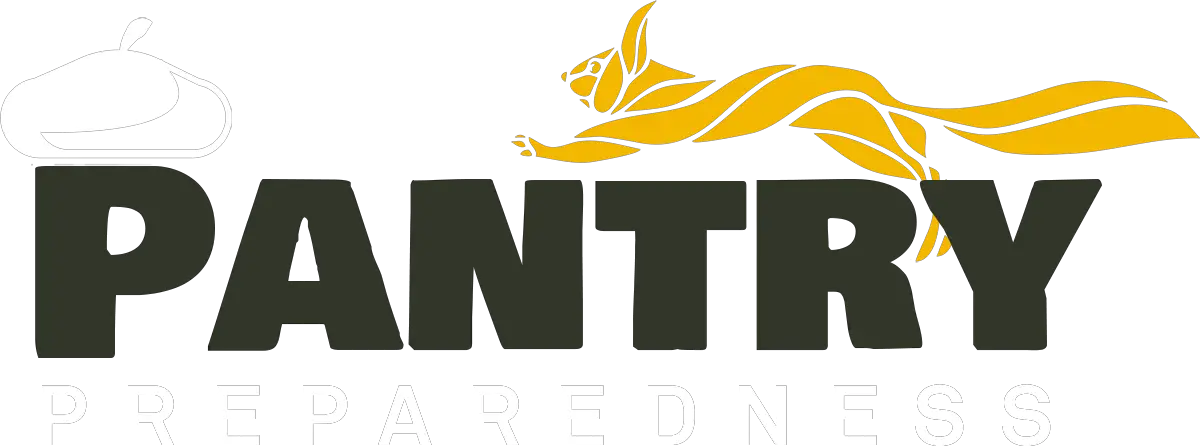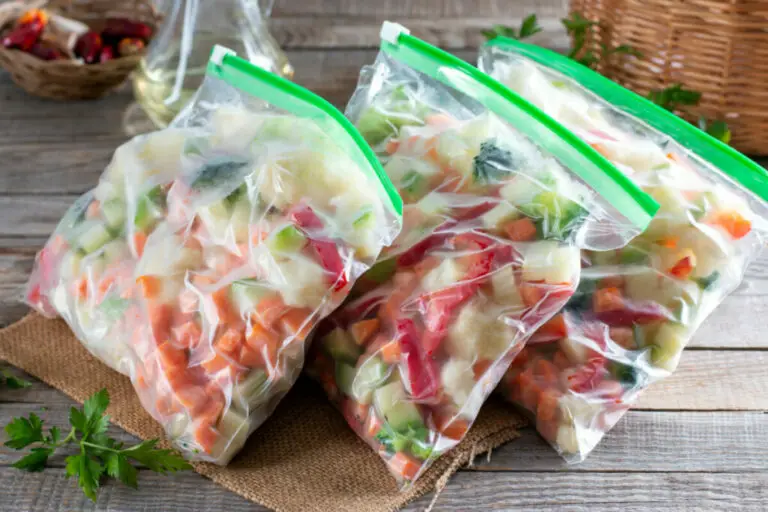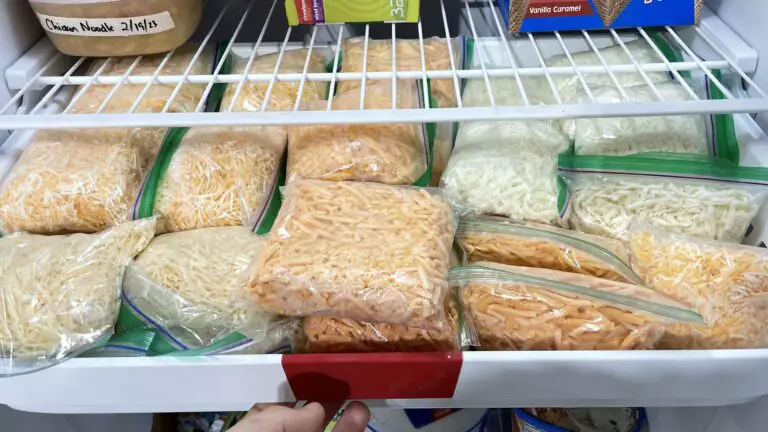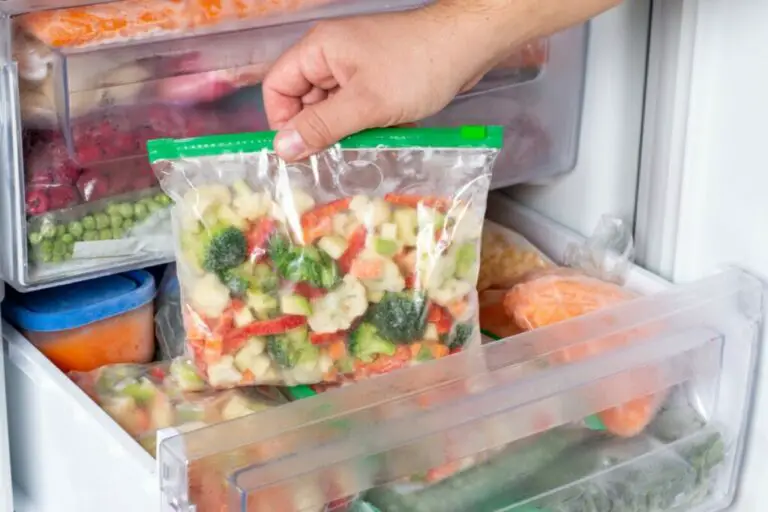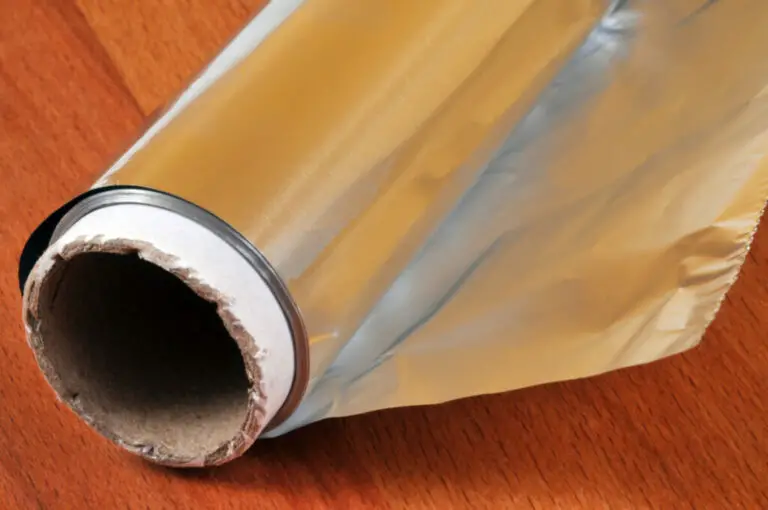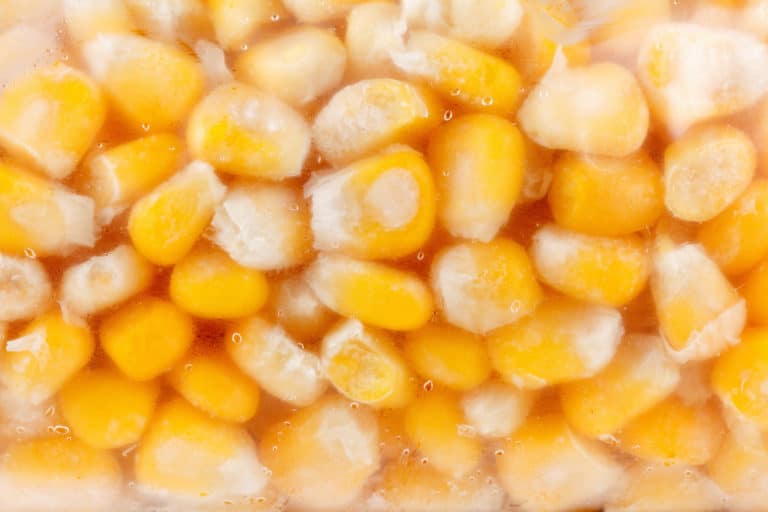When the power goes out, many people become concerned about the food in the refrigerator and freezer. Below, I have listed 6 things that you can do to keep your frozen food at a safe temperature during a power outage, so keep reading.
1. Keep The Door Closed as Much as Possible
There are many ways to keep the food inside of your freezer safe if your power goes out, but the easiest option is to keep the door closed as much as you possibly can. You will want to keep the door closed because it will help keep the cold air in the freezer, allowing the food to stay cold for as long as possible.
According to the CDC, the food in a full freezer will stay at safe temperatures for 48 hours. The food in a half-full freezer will stay safe for 24 hours. However, how long a freezer stays cold when shut varies depending on the temperature outside. Once the freezer is opened, the food will begin to defrost because a lot of cold air will rush out at once. This will cause the food to spoil quicker than expected. Spoiled food should be thrown out immediately.
The only reason you should be opening the freezer door is if you want to put more ice, dry ice, or cold packs in the freezer or if you want to get food. Another way to help the food stay good for a longer period of time is to periodically put ice into the freezer so the ice can keep the food cold.
When I was growing up, power outages occurred relatively frequently. We would open the freezer constantly, and now that I look back, it probably was not the smartest idea. Our frozen food melted and defrosted very quickly, and we ended up needing to throw most of it away.
During a power outage, it is very tempting to keep opening your freezer door to check if the ice is melted and if the food is spoiled or not. Avoid the urge to do so. If you have kids, remind them that keeping the door shut will help keep the food cold.
2. Use a Generator to Keep Freezers Powered
If the power goes out in your home and you have a generator, then you are in luck. If you have enough gas to keep your generator on until power comes back, you may be able to use your freezer as you normally do (although you will want to still avoid opening it more than necessary).
Make sure your generator is large and strong enough to support the size of your freezer or fridge. A generator with 2,000 starting watts will be able to run both a refrigerator and a freezer. Remember, when a freezer or refrigerator starts its compressor, it uses up to 5x more energy than it does the rest of the time.
Another important factor to remember is to try to have enough fuel to power the generator for long periods of time. You likely won’t have to run a freezer through a generator for more than 30 minutes at a time, as your food should be fine in the long run as long as you can keep the temperature below 40 degrees (but preferably 32 degrees). Consider having a backup fuel source available just in case the power goes out for a long period of time.
Something to be aware of with gas-fueled generators is that they can release a harmful gas called carbon monoxide, which can poison the air. Make sure you read the instructions and rules that come with the generator and only operate the generator in approved locations within a building. Keep an eye on it at all times and pay attention if you begin to notice any bad smells. Turn the generator off immediately if you think something is wrong.
3. Use a Backup Battery or Solar Generator to Keep Freezers Powered
Another option you can consider is to use a battery or solar generator to keep your freezer powered during a power outage. Battery generators run off of a battery, while solar generators get and store energy from solar panels. Battery and solar generators are becoming a lot more popular because they are generally a lot less dangerous than gas-powered generators.
Use a backup battery or solar generator to help keep your freezer food good for as long as possible during a power outage. Make sure that the battery or solar generator can support the wattage of your freezer. If your generator provides only a very limited number of watts, you may have to pick and choose between keeping your refrigerator or your freezer running if they are separate.
4. Organize Food Based on Importance or Price
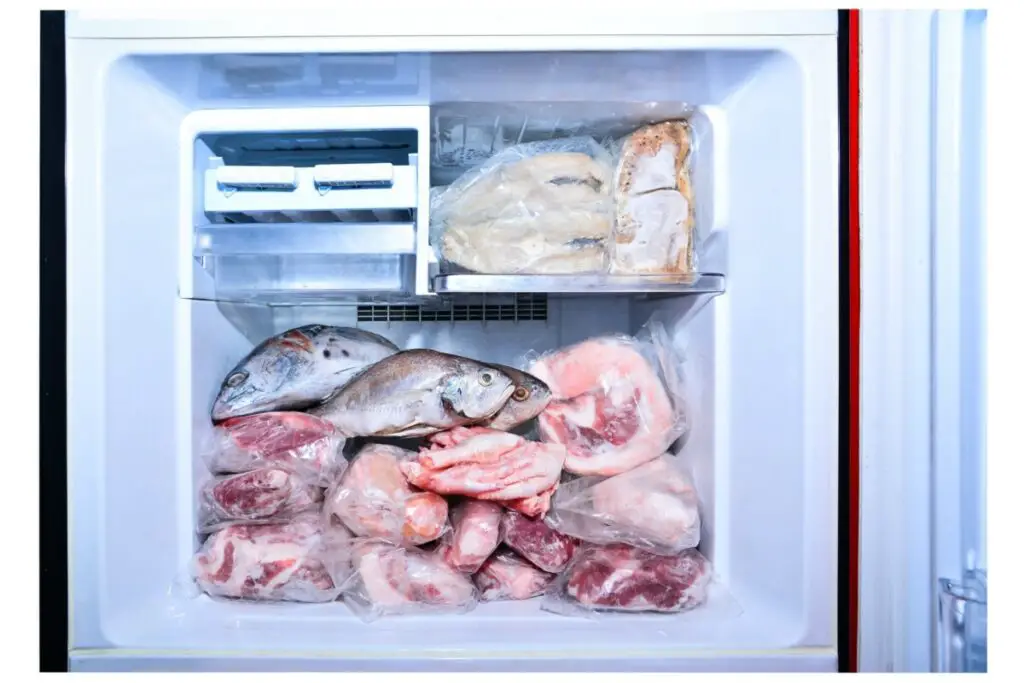
Another free option for you is to organize the food in your freezer based on how important the food is to you and how expensive the food is. If you have a freezer indoors and outdoors (and it’s typically colder outdoors than it is inside), consider putting the food you care about preserving most in the outdoor freezer, as it will stay cold for a longer amount of time. This is best done before there is a power outage, as moving food during a power outage will do more harm than good because you will let cold air escape from the freeze when opening it.
Food within the freezer that is placed in the door and smaller frozen foods will defrost faster than larger packages of frozen food that are in the back of the freezer. Because of this, we suggest taking the food in the door of the freezer and smaller frozen foods and placing them in between the larger items in the back. This will help the smaller items stay cold for longer amounts of time. Large pieces of meat typically take a while to defrost, which means that they are basically blocks of ice, even when the power goes out. Take advantage of this and use them to help keep other food items cold for longer.
Another way to organize the food is to place all of the food you care about into one of your freezers and run a generator on that specific freezer and not the other one. Sometimes, if you have food that is cheap or that you do not really care about, you can just focus on preserving the other foods and organize your freezer based on that. And remember, the more tightly packed a freezer is, the longer it will stay cold without power, since the frozen food itself will act as a “cold battery”, counteracting the gradual rise in heat.
If you have food that you can eat during the power outage like ice cream or popsicles, you can also organize your food that way. Put all of the food in the outdoor freezer that is inedible during the power outage and eat the food that is. This will help you organize your freezer based on the food’s importance.
When I was young, we would always eat ice cream and other food items that would melt easily during times when the power went out. This not only helped us not waste the food but also gave us childhood memories and allowed us to have fun during a scary situation.
5. Store Food Outside or in a Cooler
This can only be done if the weather allows it. If you live in a colder climate or if it is winter outside, consider placing your frozen food outdoors during a power outage. When your power goes out, the freezer or fridge will begin to warm up and will cause the food inside to defrost, melt, and spoil. This can then cause money to be wasted and a whole lot of frustration. To keep those food items from going bad, you can put your food outdoors. Doing this will hopefully keep the temperature of the food from getting too high.
If there is snow outside, you could even place your food directly on the cold snow or ice. This will most definitely keep the food cold for at least a few hours.
If it is not very cold outside but you want to store your food outside during a power outage, consider putting the food in the garage. Garages are typically made of cement, and cement is usually colder than the outdoor temperature. It may not be as cold as putting the food in snow or ice, but it will keep the food better for a little bit longer if your freezer has defrosted already.
The use of aluminum-lined grocery or pizza bags can help you keep food cold for as long as possible when storing it in a cool place. Coolers are even better, and if you have ice, your cooler can keep food from both the refrigerator and the freezer safe for anywhere from 7 hours to 12 days, depending on the make and manufacturer of the cooler.
Keep in mind that the danger zone for food is from 40 to 135 degrees Fahrenheit. This means that food will spoil and become contaminated if allowed to stay in this temperature range for more than 2 hours. Make sure to keep an eye on the temperature of your food if it is outdoors, as even when it is snowy outside, temperatures can fluctuate greatly throughout the day. Food can become contaminated by animals and other outdoor factors as well, so keeping food somewhere safe is a must.
If you have a cold blanket, you can also put this on your food to help keep it cold while storing outdoors or in the garage. You can purchase cold blankets that you can keep in the freezer that are made for keeping food cold during situations like this. They are a bit more expensive than normal blankets, as they cost around $100, but they are worth the cost because they will prevent your food from spoiling during a power outage.
When I was a child, we would sometimes put our food outdoors in the snow if our freezer was broken or unusable. Once the freezer started working again, we would find the food in the snow and stick it back in the freezer. It was one of our favorite things to do after a power outage.
6. Dry Ice
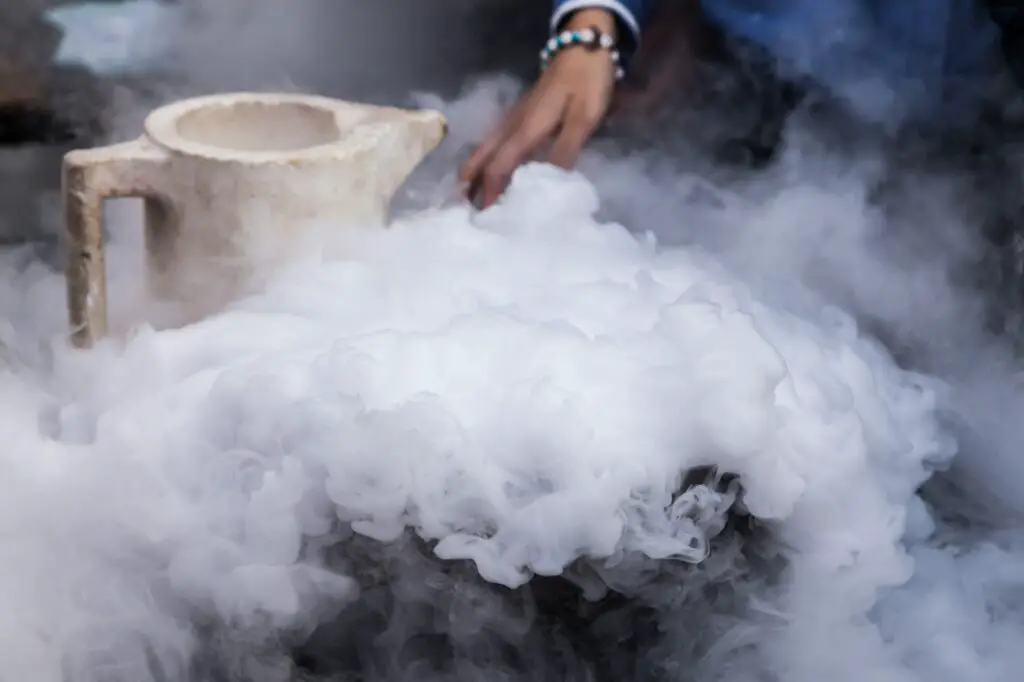
You can also use dry ice to keep your food cold. However, you will need to purchase dry ice when the power outage starts, and some stores don’t sell dry ice or won’t be able to sell it to you during a power outage.
Once you get the dry ice, put it inside the freezer with all of your food. Remember to always use insulated, waterproof gloves when handling dry ice, as direct contact with the skin can cause severe frostbite within seconds. Keep dry ice wrapped in a towel to avoid accidentally touching it.
After you put the dry ice in the freezer, close the freezer door and leave it shut. The dry ice should help cool the freezer until it reaches normal temperatures.
Dry ice is around -109 degrees Fahrenheit, so it is much colder than normal ice. It won’t melt as quickly as normal ice, which means it will keep your freezer colder for longer. However, keep the dry ice away from liquids, as when dry ice is exposed to liquid like water, it melts and releases carbon dioxide.
Keep in mind that dry ice typically lasts for 18-24 hours when kept in a cooler or freezer.
Overall, there are many things that you can do to keep your frozen food cold during a power outage. The best thing you can do, unless the power outage is expected to last multiple days, is keep the freezer door shut for as long as possible. If you need to get something out of the freezer during a power outage, figure out where the food is and grab it as quickly as possible so you can keep the freezer cold for as long as possible.
